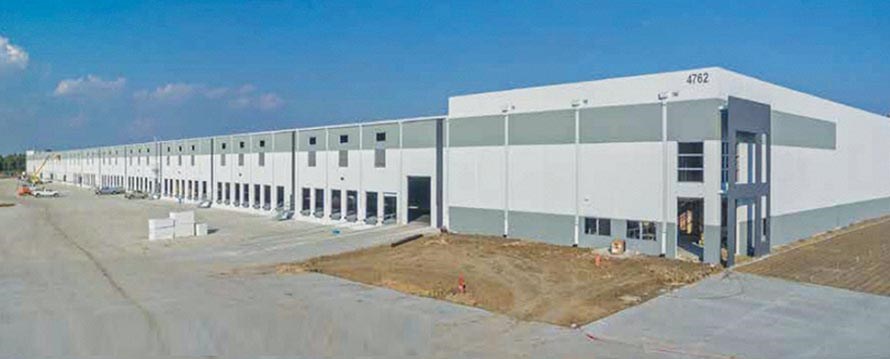This April, Pure Industrial Real Estate Trust (PIRET) of Vancouver closed an $85 million deal on its purchase of the fully leased Cedar Port distribution centre in Houston, Texas, part of an acquisition binge PIRET has been on for the past year.
PIRET is the only Canadian real estate investment trust that specializes in U.S. industrial real estate, but it may soon have Canadian competition.
Simply put, in the Trump era, U.S. industrial real estate is on a tear, according to the National Association of Realtors (NAR).
In a first quarter report, the NAR noted that U.S. industrial real estate “posted solid performance figures.” Absorption of space – lease-up and sales – hit 47 million square feet in the fourth quarter of 2016 and new completions totalled 44.7 million square feet in that three-month period.
As a comparison, Canada completed 16 million square feet of industrial in the entire past year.
The U.S. industrial vacancy rate dropped and leasing rates increased to the highest level in 10 years in the 2016 fourth quarter as President Donald Trump took power.
The overall U.S. industrial vacancy rate as of the first quarter was 5.4 per cent, according to a separate survey by Avison Young, down from nearly 2 per cent from the fourth quarter of 2016.
Leasing fundamentals in nearly every market demonstrated strength and improvement since Trump came into office. There is a supply shortage in some markets, resulting in rental rates growing precipitously, the commercial agency stated.
“Certainly, we’ve seen no slowdown in leasing activity since this time last year, and market indicators continued to improve broadly across the U.S. Even markets, such as Houston, that were cause for concern in 2016 because of volatile energy prices reported occupancy gains, robust deliveries and new construction,” said Earl Webb, Avison Young’s president of U.S. operations. “The next cycle for the industrial market could prove to be interesting as data centres, technology and distribution help drive vacancy to new lows and functionally obsolete buildings are converted to other uses. Lack of available supply, higher clear heights and land constraints are widespread and common issues.”
Where the action is
Seventeen of the 41 markets in the U.S. industrial market tracked by Avison Young posted below-average vacancy. The lowest rates in the country were in San Mateo (1.8 per cent), Orange County (2 per cent) and Miami (2.8 per cent). These are as low as or lower than in Vancouver and Toronto, which have the tightest industrial markets in Canada.
U.S. markets posted 232 million square feet of net absorption during the 12 months ending March 31 – a pace of one million square feet of take-up every month.
Six markets gained 10 million square feet or more of occupancy: Dallas, Los Angeles, Atlanta, Chicago, Detroit and New Jersey.
Some of the tightest markets registered the least amount of absorption due to lack of supply, such as in San Francisco and San Mateo, California.
In first-quarter 2017, overall average asking triple-net rent was US$6.97 per square foot, an increase of US$0.44 since the same period in 2016.
All but two U.S. markets saw rental rate increases. The leader, by far, was San Francisco, which averaged $19 per square foot, followed by San Mateo at $14.28 per square foot, and San Diego, where it costs an average of $12.24 per square foot to lease industrial space. These rates are all higher than the average in any Canadian city.
While most U.S. markets recorded only modest levels of industrial construction completions, some of the nation’s strongest performers had a remarkable volume of new supply come online during the 12 months ending March 31, 2017. Dallas delivered 25.5 million square feet – a whopping nine-million-square-foot increase compared with the previous 12-month period. In Los Angeles, 24.7 million square feet came online – virtually the same amount as in the prior 12 months – followed by Atlanta, Chicago and Houston, where 13.5 million square feet of industrial space was completed.
Altogether, 181 million square feet was underway in the U.S. as of first-quarter 2017, with a 37 per cent pre-lease rate, Avison Young noted. Increased port activity in Florida was a major hot spot.
“A trend toward more workplace amenities is still needed in industrial parks to attract and retain employees as overall U.S. unemployment declines. Demand for quality, modern space and the needs of e-commerce companies should continue to fuel the industrial market,” Webb concluded.



